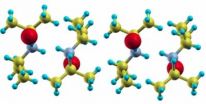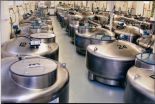(Press-News.org) The number of people in England adding salt to food at the table fell by more than a quarter in the five years following a national campaign, according to research published in the British Journal of Nutrition.
In 2003, the UK Food Standards Agency and the Department of Health launched a national salt reduction campaign to raise public awareness of the impact of salt on health and to work with the food industry to reduce the amount of salt in processed foods.
Although previous research found that the national campaign led to an overall reduction in salt intake, this is the first study to look directly at the effect it had on the amount of salt people add to their food at the table.
Researchers from the London School of Hygiene & Tropical Medicine looked at salt intake from 1997-2007 in large nationally-representative samples of more than 6,000 adults living in England. They found that since the campaign launched in 2003, the proportion of people reporting that they add salt at the table dropped from 32.5% to 23.2% in the following five years.
Lead author Jennifer Sutherland from the London School of Hygiene & Tropical Medicine, said: "Salt use at the table accounts for 15-20% of total salt intake. Our study shows that from 1997-2007 there was a steady decline in salt use at the table, but this reduction was greater after the introduction of the salt reduction campaign in 2003."
Researchers also found differences in the amount of salt added at the table by different population groups. Women were less likely to add salt at the table, as were those from younger age groups, non-white ethnic groups, higher income households and people living in central or south England.
Co-author Dr Alan Dangour, a nutritionist at the London School of Hygiene & Tropical Medicine said: "These findings indicate a need to tailor future salt reduction efforts to specific target groups. More work is needed as a quarter of adults still add salt at the table and salt intake levels in the UK remain well above the recommended amount of 6g per day. Eating too much salt can lead to raised blood pressure, which increases the risk of heart disease and stroke."
###
Jennifer Sutherland, Phil Edwards, Bhavani Shankara and Alan D. Dangour. Fewer adults add salt at the table after initiation of a national salt campaign in the UK: a repeated cross-sectional analysis. British Journal of Nutrition. DOI: http://dx.doi.org/10.1017/S0007114512005430. END
Fewer people adding salt at the table
2013-01-28
ELSE PRESS RELEASES FROM THIS DATE:
Novel materials: Smart and magnetic
2013-01-28
Novel, smart materials like shape memory alloys very often display so-called glass-like magnetism. Other smart materials with similar properties include those which, when exposed to a magnetic field, change their electrical resistance, known as manganites, or change their temperature, known as magnetocaloric materials. Kaustav Mukherjee and his colleagues from the Consortium for Scientific Research Indore in India studied a key stage in the formation of such a magnetic glass material, called Pr0.5 Ca0.5 Mn0.975 Al0.025 O3, in a paper about to be published in EPJ B.
They ...
A new material for environmentally friendlier electronics
2013-01-28
The electronics industry has a remarkable impact on the environment, yet research is devising new solutions to reduce it. Among these, a new compound with an unutterable name, the diisopropylammonium bromide (DIPAB), a new ferroelectric material created by an international team of researchers that include Massimo Capone and Gianluca Giovannetti of Istituto Officina dei Materiali at CNR and of the International School for Advanced Studies of Trieste (SISSA), whose research has been just published in Science magazine.
"A ferroelectric material has properties analogous ...
A safer way to vaccinate
2013-01-28
CAMBRIDGE, MA -- Vaccines usually consist of inactivated viruses that prompt the immune system to remember the invader and launch a strong defense if it later encounters the real thing. However, this approach can be too risky with certain viruses, including HIV.
In recent years, many scientists have been exploring DNA as a potential alternative vaccine. About 20 years ago, DNA coding for viral proteins was found to induce strong immune responses in rodents, but so far, tests in humans have failed to duplicate that success.
In a paper appearing in the Jan. 27 online ...
Some health benefits of berries may not make it past your mouth
2013-01-28
COLUMBUS, Ohio – Research has suggested that compounds that give colorful fruits their rich hues, especially berries, promote health and might even prevent cancer. But for the first time, scientists have exposed extracts from numerous berries high in those pigments to human saliva to see just what kinds of health-promoting substances are likely to survive and be produced in the mouth.
It's too early to name the best berry for health promotion based on this initial work. But the researchers have discovered that two families of pigments that provide berries with their colors, ...
Soya protein can be replaced by rapeseed protein
2013-01-28
Jena (Germany) Today, more than 500 million people are suffering from a lack of adequate protein in their diet. Each year, the number of human beings increases by 80 million, a figure which is equivalent to the present population of Germany. Thus, providing enough food, particularly sufficient protein for the increasing populace is a challenging task for societies all over the world. On a prospective basis, a progressively smaller proportion of human protein requirement can be provided by animal proteins such as meat, eggs, and milk. "However, by feeding valuable plant ...
Study of human specimen collections in the US offers first look at their huge diversity
2013-01-28
Chapel Hill, N.C. – Biobanks are organizations that collect, store and share human specimens (e.g., blood, solid tissues, hair) for research purposes. The rise of the human genome project and of large-scale genetics studies have spurred a dramatic increase in the number of biobanks in the last decade, increasing their importance in biomedical research.
But until now, biobanks in the U.S. have never been studied systematically, leaving few clear details as to how they are run or the policies and practices they use in managing their work.
A new study from the University ...
Discovering the missing 'LINC' to deafness
2013-01-28
Tel Aviv — Because half of all instances of hearing loss are linked to genetic mutations, advanced gene research is an invaluable tool for uncovering causes of deafness — and one of the biggest hopes for the development of new therapies. Now Prof. Karen Avraham of the Sackler Faculty of Medicine at Tel Aviv University has discovered a significant mutation in a LINC family protein — part of the cells of the inner ear — that could lead to new treatments for hearing disorders.
Her team of researchers, including Dr. Henning Horn and Profs. Colin Stewart and Brian Burke of ...
With hot air treatment, bacteria fly the coop
2013-01-28
This press release is available in Spanish.Poultry producers can reduce bacterial cross-contamination in poultry cages by treating the cages with forced air that's been heated to 122 degrees Fahrenheit, according to a study by U.S. Department of Agriculture (USDA) scientists.
While being transported in coops on trucks, poultry that have bacteria such as Campylobacter can contaminate, through their feces, other poultry that are free of pathogens. Those disease-causing bacteria can then be passed on to the next group of birds during the next trip, and so forth, unless ...
Islet transplant may slow progression of atherosclerosis
2013-01-28
Minimally invasive islet transplantation for patients with type 1 diabetes achieves insulin independence and reverses the progression of atherosclerosis in the first few years after transplant, according to a University of Illinois at Chicago study.
The research is published in the February issue of the journal Diabetes Care and is available online.
Patients with diabetes, particularly women, have a substantial increased risk of dying from ischemic heart disease, according to previous research. However, future cardiac events may be prevented with intensive glycemic ...
Central Valley irrigation intensifies rainfall, storms across the Southwest
2013-01-28
Irvine, Calif., Jan. 28, 2013 – Agricultural irrigation in California's Central Valley doubles the amount of water vapor pumped into the atmosphere, ratcheting up rainfall and powerful monsoons across the interior Southwest, according to a new study by UC Irvine scientists.
Moisture on the vast farm fields evaporates, is blown over the Sierra Nevada and dumps 15 percent more than average summer rain in numerous other states. Runoff to the Colorado River increases by 28 percent, and the Four Corners region experiences a 56 percent boost in runoff. While the additional ...



